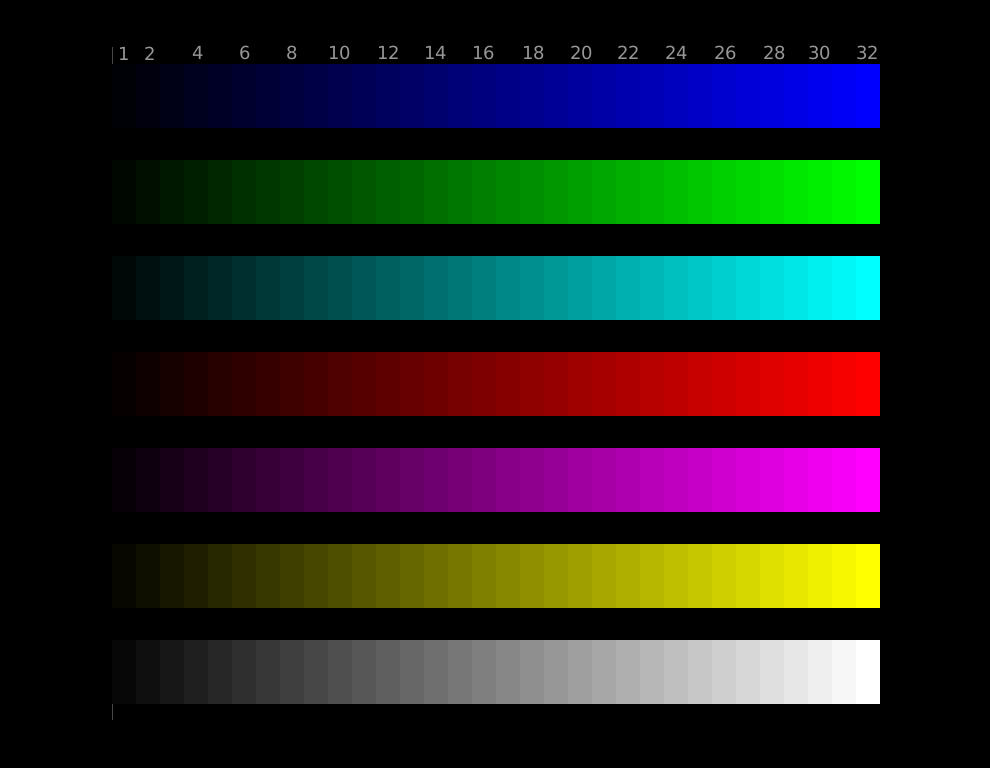
All 32 bands should be distinguishable from each other and from the background.

Adjust the sharpness such that all squares blend in. Native resolution required.
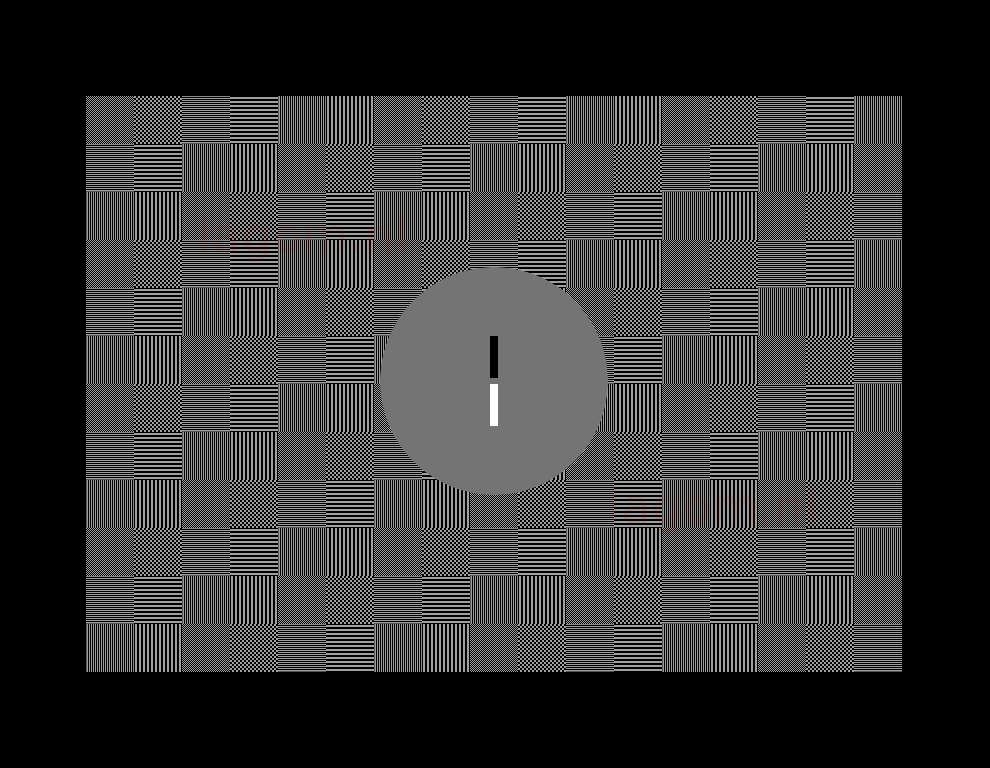
The stripes should blend in at value 2.2. Native resolution required.
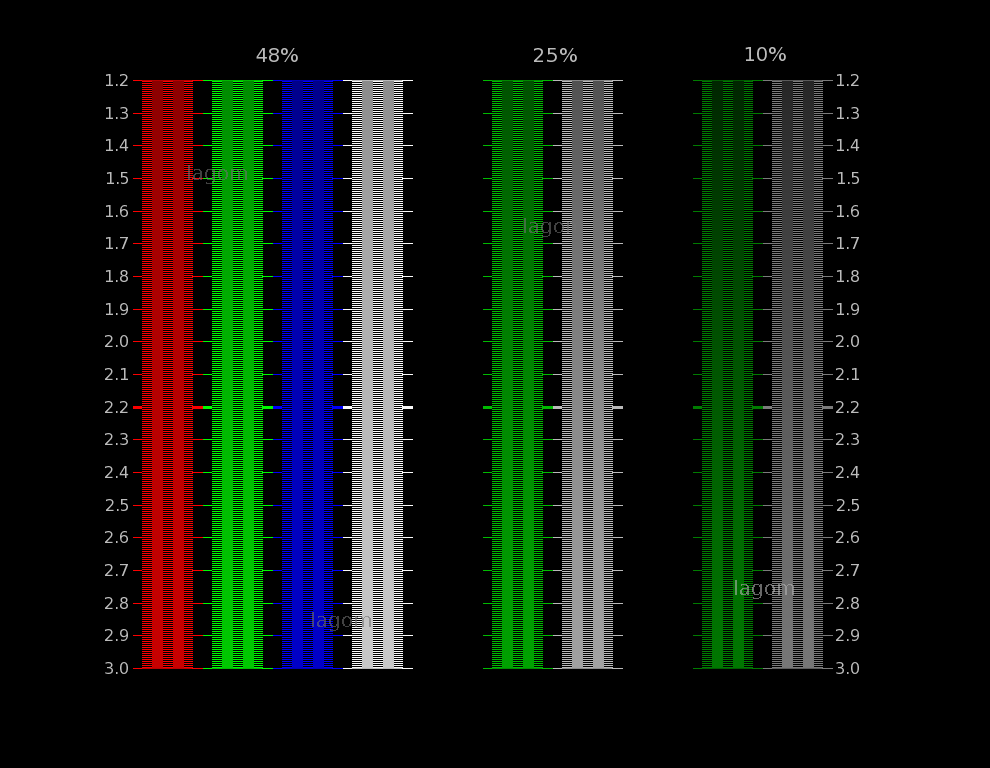
The gradient should be smooth without vertical lines or bands.

All squares should be distinguishable from the background, preferably without visible noise.
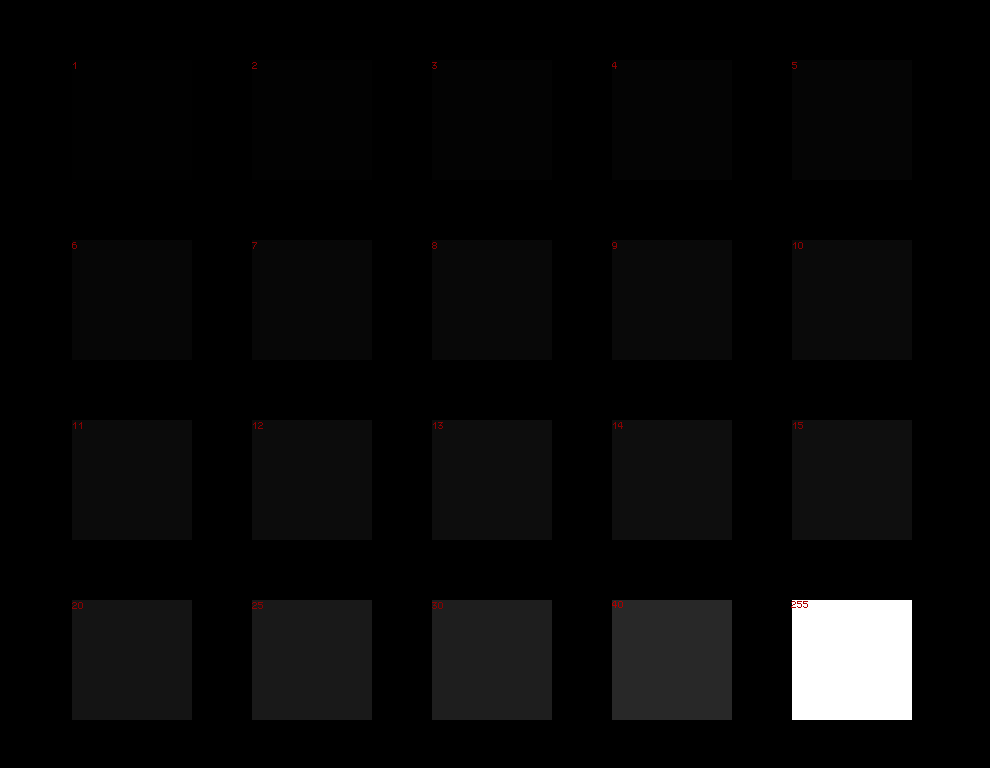
All squares should be distinguishable from the background.
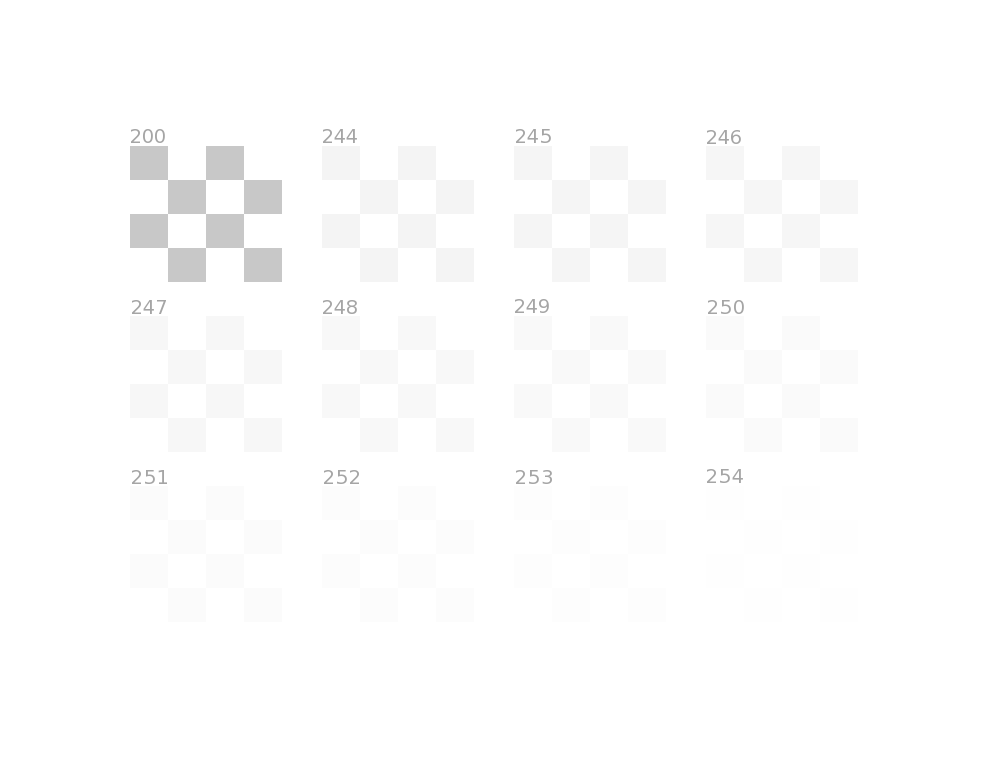
One of the 9 boxes below may flicker slightly. The less is flickers, the better. Native resolution required.
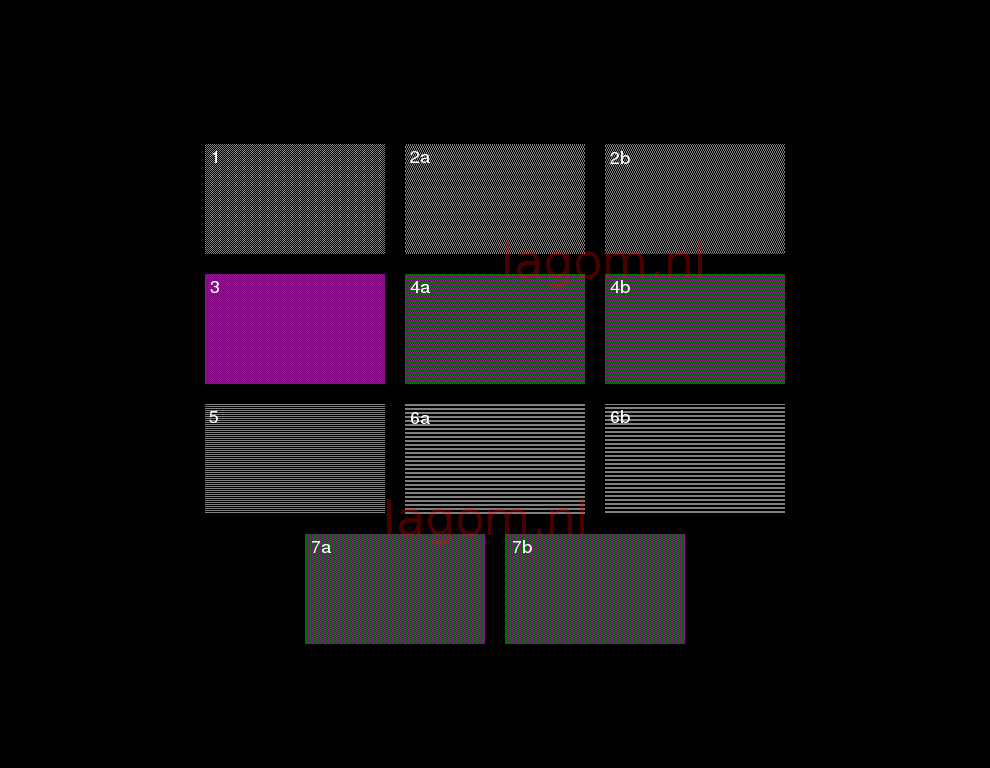
Full-screen version below:
Less flashing on the left means a shorter (faster) response time. Use the chart on the right for comparison. Native resolution required.

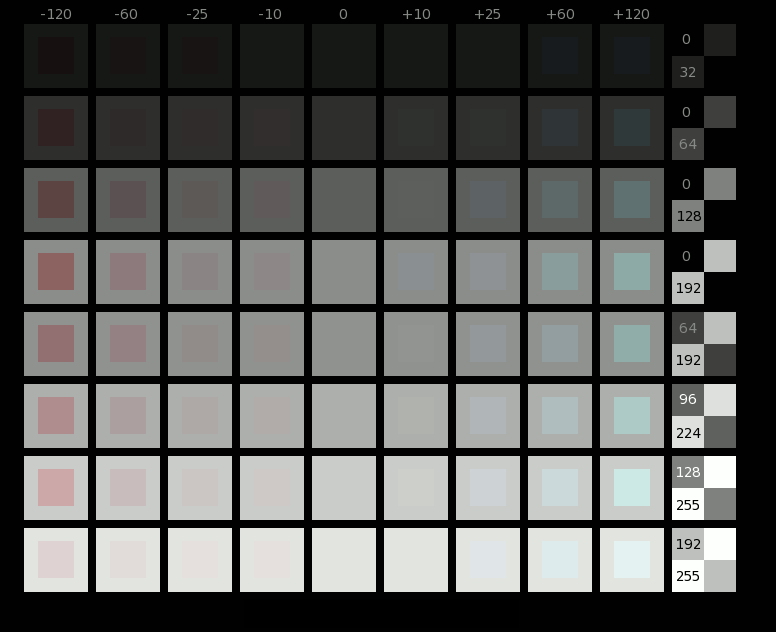
The colors below should change as little as possible with the viewing angle.
To measure the contrast ratio, please visit the contrast-ratio page.
Check that the font display is optimal with subpixel smoothing. The edge in the colored square that appears as a black line points towards your subpixel layout.